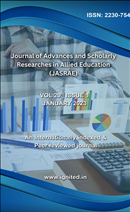Athletes with Runner's Heel Pain: Dry Needling's Effects and Conventional Treatment vs Conventional Treatment
Comparing the Effectiveness of Dry Needling and Conventional Treatment for Runner's Heel Pain
Keywords:
athletes, runner's heel pain, dry needling, conventional treatment, pain, functions, randomization, subjects, VAS, FFI, ROM, LEFSAbstract
Title Athletes with Runner's Heel Pain Dry Needling's Effects and Conventional Treatment vsConventional Treatment.Objective The study is aimed to ascertain the effectiveness of dry needling and conventionaltreatment vs conventional treatment on pain and functions in athletes with runner’s heel pain.Study design Trial controlled by randomization was adopted for the study.Subjects 50 athletes between the 18 to 40 year old age range having significant amount of heel painwere selected as per the inclusion and exclusion criteria.Procedure Random sampling method was used, the 50 subjects separated into two groups. equalgroups with 25 subjects in each group. Along with conventional treatment the group A for theexperiment was also using dry needling to treat of gastrocnemius and soleus muscle andConventional group B was only treated with conventional treatment. The pretest values of VAS , FFI,ROM, LEFS were taken of both the groups. Group A was given treatment of four weeks of onceweeklydry needling whereas Group B was given a total of 10 sessions of ultrasound in the span of 4weeks along with taping and conventional exercises once a week. As a result of 4 weeks the posttest values were statistically interpreted.Results VAS score for experimental group showed the mean difference of 4.24 while the meandifference in control group was only 2.84. The FFI for experimental group showed the meandifference of 40.56 whereas for the control group the mean difference was only 28.44. similarly LEFSscore for experimental group showed the mean difference of 24.52 whereas for control group it was19.84. However there was not a major significant difference in the ROM of both the groups.Conclusion The study showed that conventional treatment with dry needling of gastrocnemius amdsoleus muscle was more effective than only conventional treatment in athletes with runner’s heelpain.Downloads
Download data is not yet available.
Published
2023-01-01
Issue
Section
Articles
How to Cite
[1]
“Athletes with Runner’s Heel Pain: Dry Needling’s Effects and Conventional Treatment vs Conventional Treatment: Comparing the Effectiveness of Dry Needling and Conventional Treatment for Runner’s Heel Pain”, JASRAE, vol. 20, no. 1, pp. 4–22, Jan. 2023, Accessed: Jan. 13, 2026. [Online]. Available: https://ignited.in/index.php/jasrae/article/view/14256











